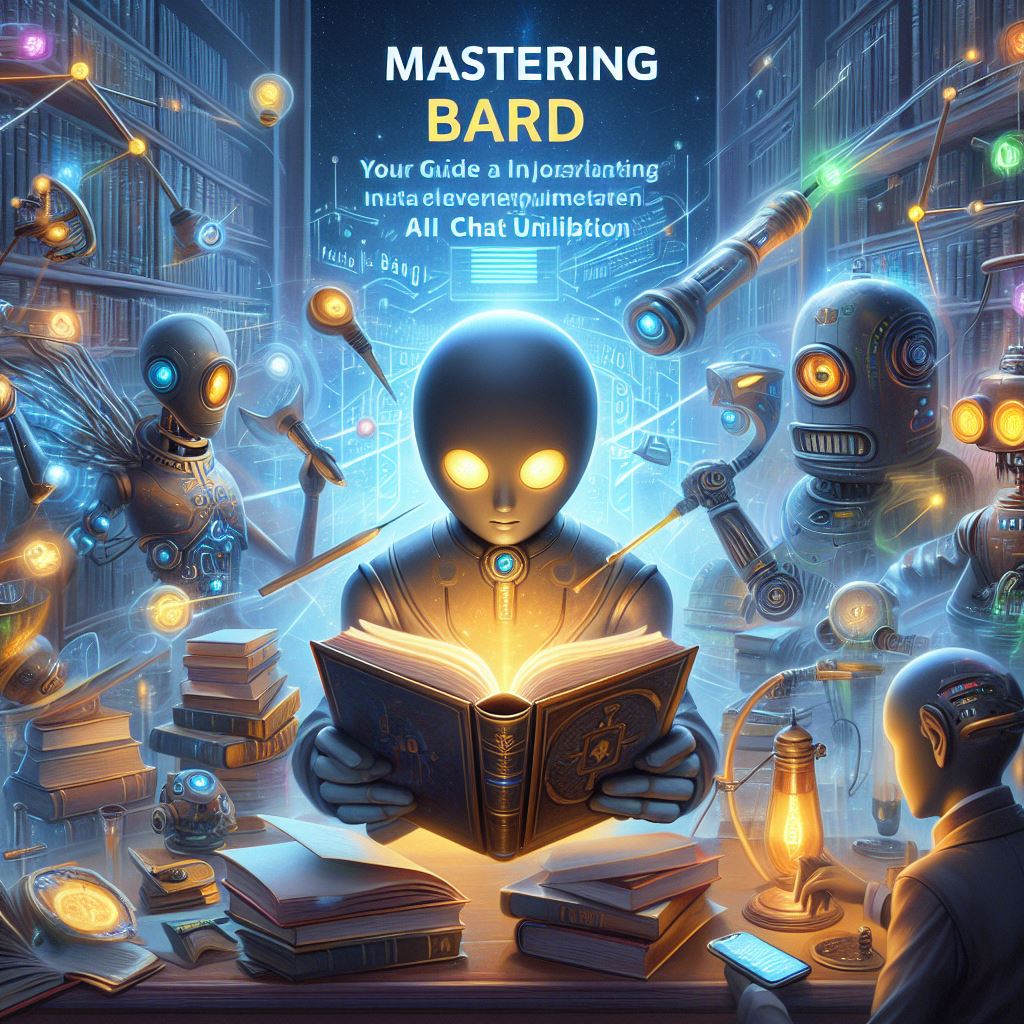Mastering Bard: Your Guide to Effective Google AI Chat Utilization. Bard, Google’s AI chat tool, has emerged as a powerful resource for information retrieval, creative content generation, and collaborative problem-solving. With its vast knowledge base and advanced language processing capabilities, Bard offers a unique opportunity to enhance productivity, spark creativity, and gain new insights.
However, effectively utilizing Bard’s full potential requires a deeper understanding of its functionalities, limitations, and best practices.
Mastering Bard: Your Guide to Effective Google AI Chat Utilization
This comprehensive guide serves as your roadmap to mastering Bard’s capabilities. We’ll explore its features, delve into best practices, and provide real-world examples to empower you to unlock the full potential of this remarkable AI tool.
Understanding Bard’s Core Capabilities:
At its core, Bard excels in three key areas:
- Information Retrieval: Bard can access and process vast amounts of information from Google Search and its internal knowledge base, allowing you to ask questions and receive informative, comprehensive answers.
- Creative Content Generation: From crafting engaging poems and scripts to generating captivating song lyrics and code snippets, Bard can assist you in expressing your creativity and producing original content.
- Collaborative Problem-Solving: Bard can analyze data, identify patterns, and suggest solutions to complex problems, enhancing your decision-making and brainstorming processes.
Essential Features and Functionality:
To unleash Bard’s power, it’s crucial to understand its key features and how to utilize them effectively:
- Prompt Input: This is where you formulate your question or directive to Bard. The clarity and specificity of your prompt directly impact the quality of Bard’s response.
- Response Generation: Bard analyzes your prompt and generates a textual response. You can choose to refine the response by providing further feedback or changing the prompt.
- Example Generation: For specific tasks, Bard can generate relevant examples to illustrate its response and enhance your understanding.
- Code Generation: Bard can translate your natural language instructions into working code, streamlining tasks like web scraping and data analysis.
- Translation: Bard can translate text between multiple languages, fostering communication and understanding across diverse audiences.
Mastering the Art of Prompting:
Crafting the perfect prompt is key to unlocking Bard’s full potential. Here are some best practices to follow:
- Be specific and clear: Avoid vague or ambiguous prompts. The more specific you are, the more accurate and relevant Bard’s response will be.
- Provide context: Whenever possible, provide relevant context to your prompt. This helps Bard understand the intent behind your request and tailor its response accordingly.
- Use keywords: Include relevant keywords in your prompt to guide Bard towards the specific information or outcome you desire.
- Be creative and experiment: Don’t be afraid to experiment with different types of prompts and explore Bard’s diverse capabilities.
- Refine and iterate: Based on Bard’s initial response, refine your prompt further to achieve the desired outcome.
Examples of Effective Prompts:
- “What are the environmental impacts of fast fashion?”
- Creative Content Generation: “Write a sonnet about the beauty of nature.”
- Collaboration: “Help me brainstorm ideas for a new marketing campaign.”
- Code Generation: “Write a Python script to analyze the data in this spreadsheet.”
- Translation: “Translate this text from French to Spanish.”
Best Practices for Effective Interaction:
To maximize your experience with Bard, follow these best practices:
- Provide feedback: After receiving a response, let Bard know if it was helpful and accurate. This feedback helps Bard learn and improve its responses over time.
- Use multiple prompts: If you’re not satisfied with the initial response, try rephrasing your prompt or providing additional context.
- Explore different styles: Bard can generate responses in different styles, such as formal, casual, or humorous. Experiment with different styles to see which one best suits your needs.
- Utilize Bard’s diverse features: Don’t limit yourself to just one type of prompt. Explore all of Bard’s capabilities, such as code generation, translation, and example generation.
- Be patient and persistent: It may take some time and experimentation to master Bard’s functionalities. Be patient, keep practicing, and you’ll gradually unlock its full potential.
Real-World Examples of Effective Bard Usage:
- Students: Use Bard to research topics, generate creative writing prompts, and translate complex academic texts.
- Professionals: Utilize Bard for brainstorming ideas, generating presentations, and translating business documents for international clients.
- Writers and Artists: Employ Bard to overcome creative blocks, generate story ideas, and translate artistic concepts into written descriptions.
- Programmers: Leverage Bard to write simple code snippets, translate technical documentation, and debug errors.
- Educators: Use Bard to create interactive learning materials, generate quizzes and assessments, and personalize learning experiences
Understanding Bard’s Limitations and Responsibilities:
While Bard possesses remarkable capabilities, it’s crucial to understand its limitations and utilize it responsibly.
Limitations:
- Bias: Like all AI models, Bard is trained on a massive dataset of text and code, which may reflect societal biases. Be aware of potential bias in Bard’s responses and seek diverse perspectives.
- Factual Inaccuracies: Bard’s responses are based on its training data and may not always reflect the latest information or scientific consensus. Always cross-check information with reliable sources.
- Limited Reasoning: Bard excels in specific tasks but struggles with complex, open-ended questions requiring reasoning and critical thinking.
- Misinterpretations: Misinterpretations can occur due to ambiguous prompts or Bard’s limited understanding of the context. Always carefully review and evaluate Bard’s responses.
Responsible Use:
- Avoid relying solely on Bard: While Bard can be a valuable tool, don’t rely solely on its responses for critical decisions or tasks. Use your own judgment and consult other sources for confirmation.
- Recognize Bard’s limitations: Be aware of Bard’s limitations and avoid asking questions that require complex reasoning or factual accuracy beyond its capabilities.
- Provide accurate and unbiased prompts: Your prompts significantly influence Bard’s responses. Ensure your prompts are accurate, unbiased, and free from harmful stereotypes or prejudices.
- Respect others: Avoid using Bard to generate harmful content that promotes hate speech, discrimination, or violence.
- Use Bard ethically: Utilize Bard for positive and constructive purposes, and avoid using it for malicious or deceptive activities.
Must Read: The impact of artificial intelligence on the future of work.
Community and Support:
As you embark on your journey with Bard, remember that you’re not alone. A thriving community of users and developers exists to support you and help you unlock Bard’s full potential.
- Bard Help Center: This comprehensive resource provides detailed information about Bard’s features, functionalities, limitations, and best practices.
- Bard Community Forum: This forum allows you to connect with other Bard users, share experiences, ask questions, and learn from each other.
- Bard’s Developer Documentation: If you’re interested in diving deeper into Bard’s technical aspects, the developer documentation provides detailed information about its APIs and functionalities.
Conclusion:
Bard represents a powerful tool for information retrieval, creative expression, and collaborative problem-solving. By understanding its capabilities, limitations, and best practices, you can unlock its true potential and transform your workflow, enhance your creativity, and gain valuable insights. Remember, Bard is constantly learning and evolving, so keep exploring its features, experimenting with different prompts, and contributing to the community to maximize your experience and become a true master of this remarkable AI assistant.
This guide provides a comprehensive foundation for mastering Bard. However, the journey of exploration and discovery with this AI has only just begun. As Bard continues to evolve and learn, so too will the possibilities for its application in diverse facets of our lives. Embrace the opportunities that Bard presents, stay informed about its latest advancements, and contribute to its development through your own interactions and feedback. Together, we can unlock the full potential of this powerful tool and shape a future filled with innovation, creativity, and collaborative progress.











